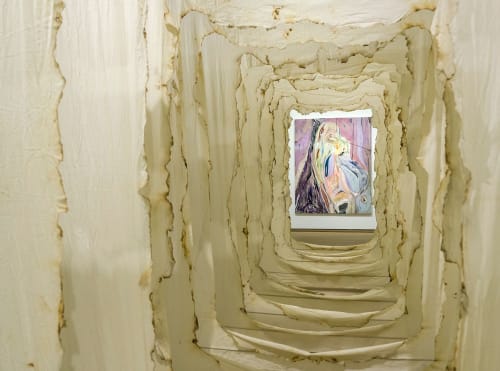Manuel Mathieu says his practice is on the cusp of expansion—a seemingly impossible feat, considering it already encompasses drawing, painting, sculpture, ceramics, and installation.
Yet this expansion is grounded in singularity. 'Good artists might talk about three, four, or five subjects,' he explains. 'The best ones only talk about one.' Mathieu was talking to me from a residency at Art House in Sonoma, California, where he created Grief (2021), a pink and blue-hued painting with what look like flames ripping across its surface. The work will be presented at JINGART Beijing with HdM Gallery (10–13 June 2021).
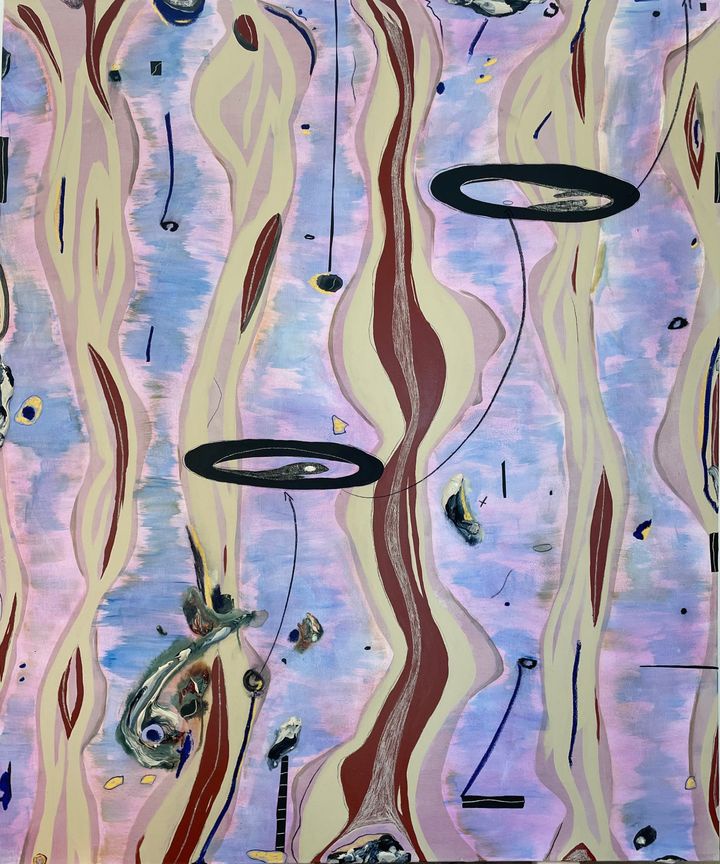
Manuel Mathieu, Grief (2021). Courtesy the artist.
The recipient of Canada's 2020 Sobey Art Award, Mathieu's most recent institutional exhibitions at Toronto's The Power Plant (World Discovered Under Other Skies, 26 September–summer 2021), and the Montreal Museum of Fine Arts (Survivance, 17 September 2020–28 March 2021) featured the artist'sabstract paintings, which shift between captivating details and great swathes of colour.
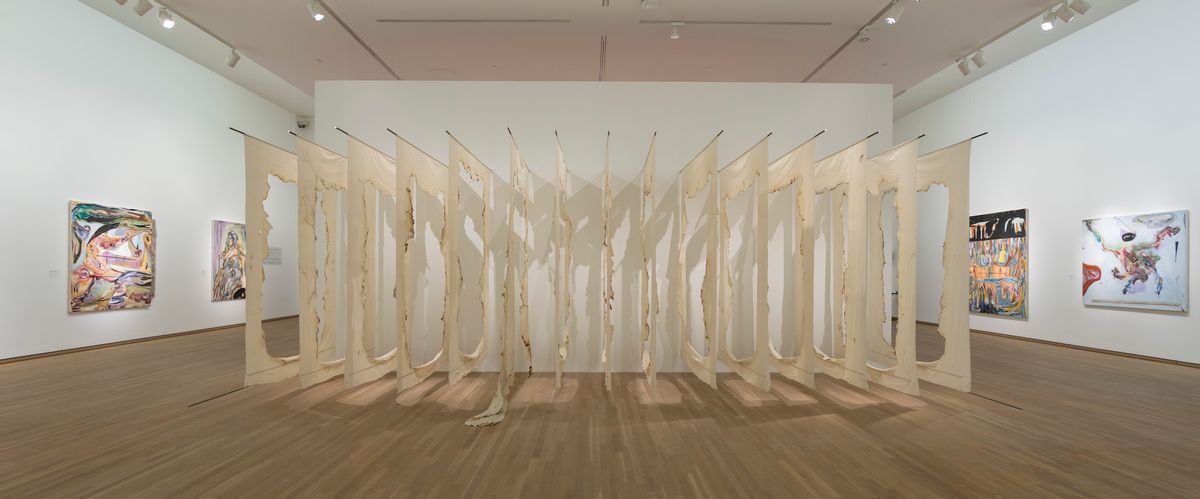
Manuel Mathieu, Ouroboros (2020). Exhibition view: Survivance, Montreal Museum of Fine Arts, Montreal (17 September 2020–28 March 2021). Courtesy the artist. Photo: Denis Farley.
At the Montreal Museum of Fine Arts, Mathieu also showed a newly commissioned installation titled Ouroboros (2020). Comprising 15 sheets of cotton hanging in single file, their middles burnt to create a tunnel running through, the installation acts as a portal to works placed on walls at either end. Conceived from a visualisation, Mathieu notes the work is ahead of his own understanding—a sense of open discovery that harks back to his first-ever installation, which happened without him knowing it, when he was 15 and still living in Haiti.
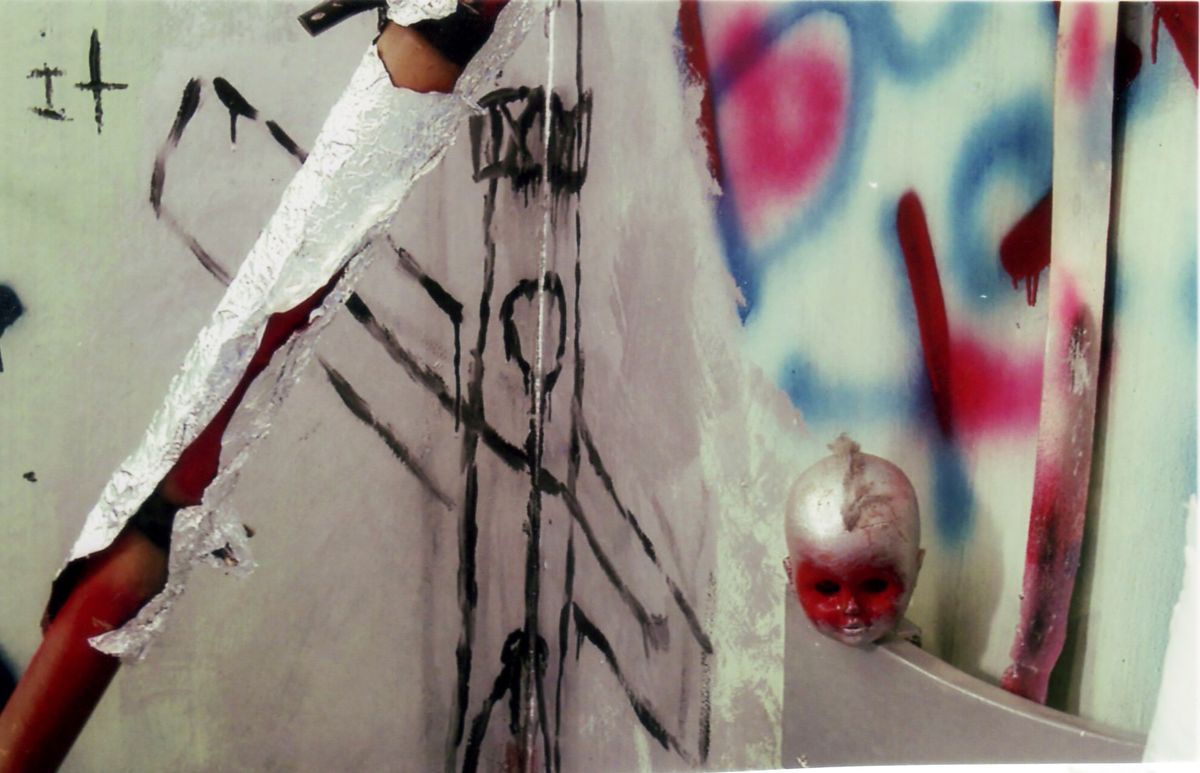
Manuel Mathieu, bedroom installation. Courtesy the artist.
With the encouragement of his cousin and mentor, the artist Mario Benjamin, Mathieu invited his friends to spray paint their names on the walls of his room, and hung condoms, a skull, and doll heads, among other objects, along a bamboo stick that ran across the space. It was an orchestration, he realises, of mental collages. A space that vibrated, yet felt strangely peaceful; 'Like being inside yourself'.
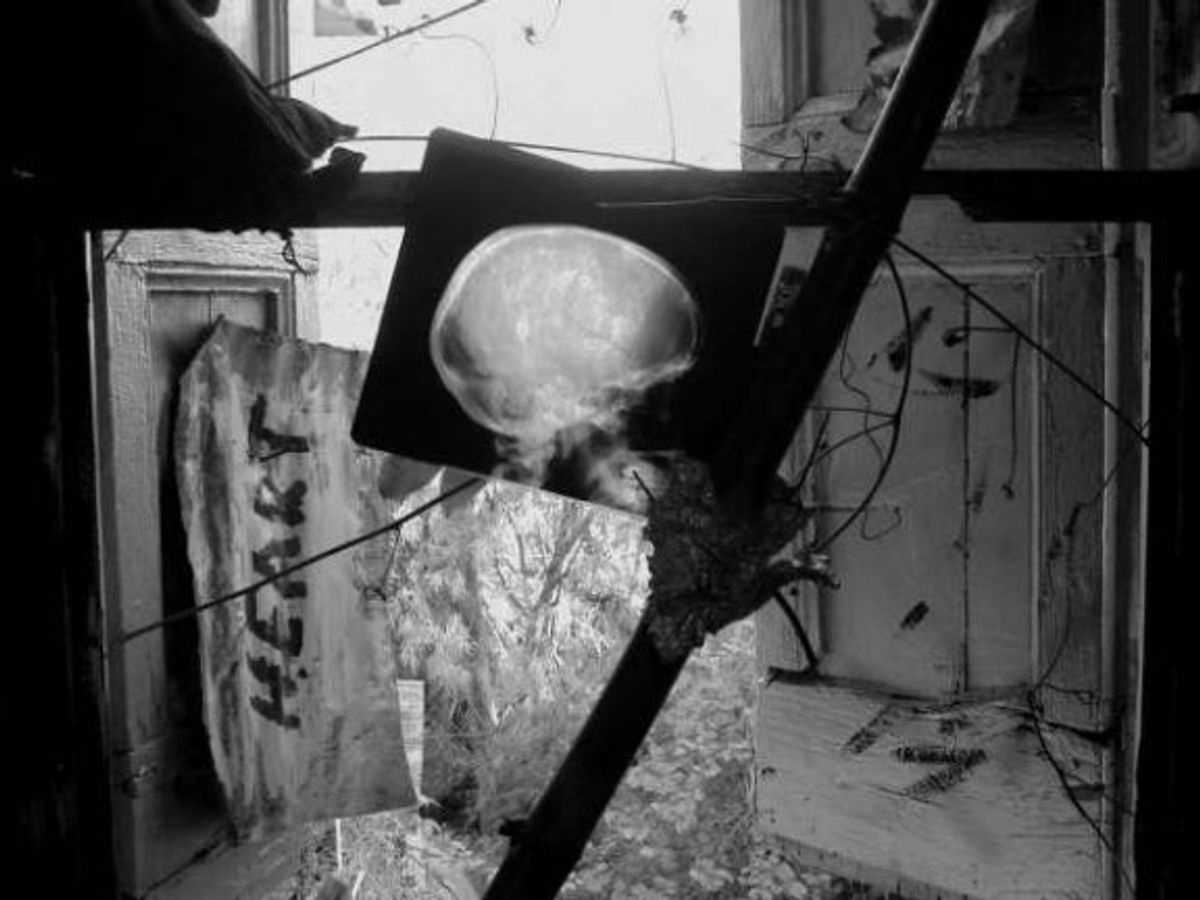
Manuel Mathieu, bedroom installation. Courtesy the artist.
At the age of 19, Mathieu relocated to Blainville in Canada, where he lived with his grandmother, Marie-Solange Apollon. In 2018, the artist created a fund at the Museum of Fine Arts in Montreal under her name to help diversify the museum's collection.
Through painting, the artist means to distil the outside into the surface—an alchemical process that transfers to his ceramic works.
Manuel went on to receive his BFA from Université du Québec à Montréal, which included classes in darkroom photography, building on his experience as apprentice to photographer Roberto Stephenson in Haiti. The classes pushed his understanding of composition further, in photography's reliance of the unseen—what lies beyond the frame—to generate an image.
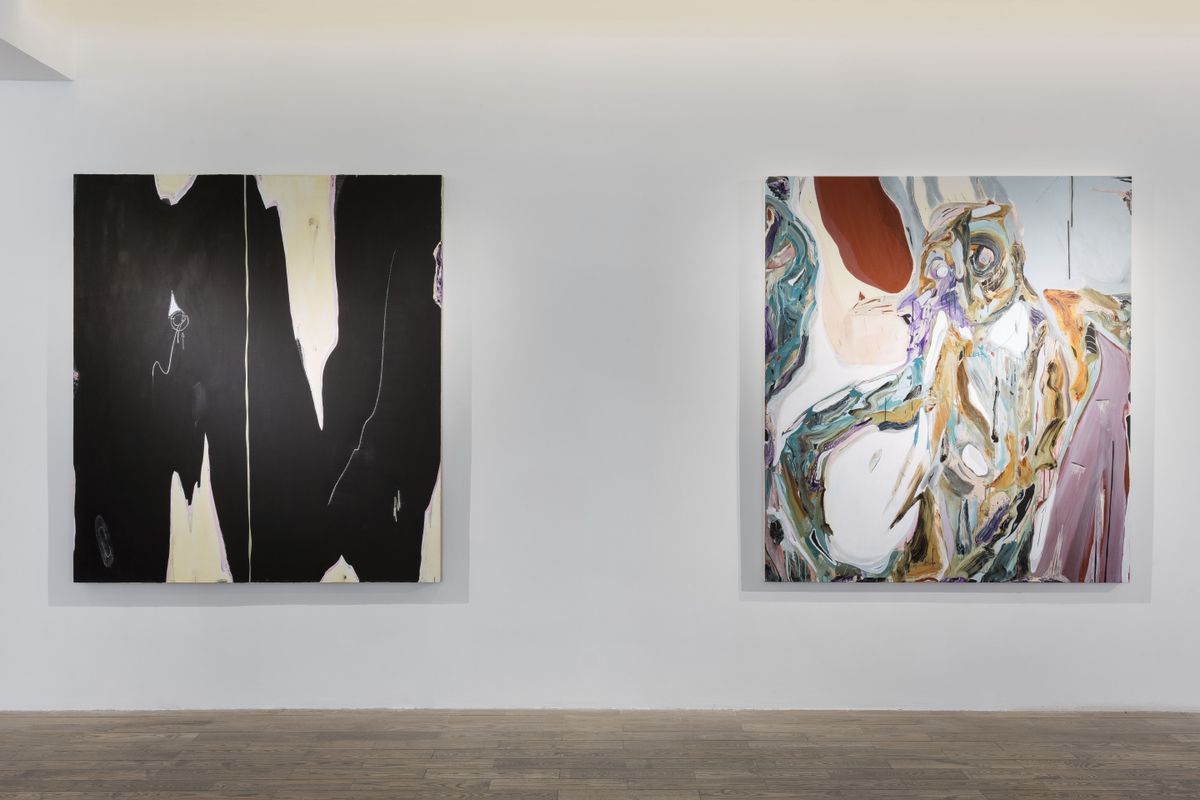
Exhibition view: Manuel Mathieu, Wu Ji, HdM Gallery, Beijing (22 March–27 April 2019). Courtesy HdM Gallery.
Referring to artists such as Louise Bourgeois and Mona Hatoum and the consistent thematic threads that bind their multidisciplinary works, Mathieu tells me that he is in pursuit of ways to talk about the human condition that go beyond surface understanding.
Through painting, the artist means to distil the outside into the surface—an alchemical process that transfers to his ceramic works. Visiting Beijing for his solo exhibition at HdM Gallery (Wu Ji, 22 March–27 April 2019), Mathieu flew to Jingdezhen, China's historic porcelain capital, where he created an untitled series of ceramics that were recently shown at The Power Plant in Toronto.

Manuel Mathieu, Untitled (2019). Ceramic. Courtesy the artist.
The pieces were inspired by the work of Haitian blacksmith and sculptor Georges Liautaud, whose metal sculptures interpreted spiritual deities—their distinct forms recalling the outlines of shadow puppets.
Mathieu's ceramics reduce the figure to abstraction, creating a new language and 'unforeseen' historical and cultural bridges. They have an animist and alchemist sensibility, with the object transcending surface readings to embody a 'net of interrelations', as Dominican artist, poet, and art critic Manuel Arturo Abreu wrote in a recent essay on the artist's work.
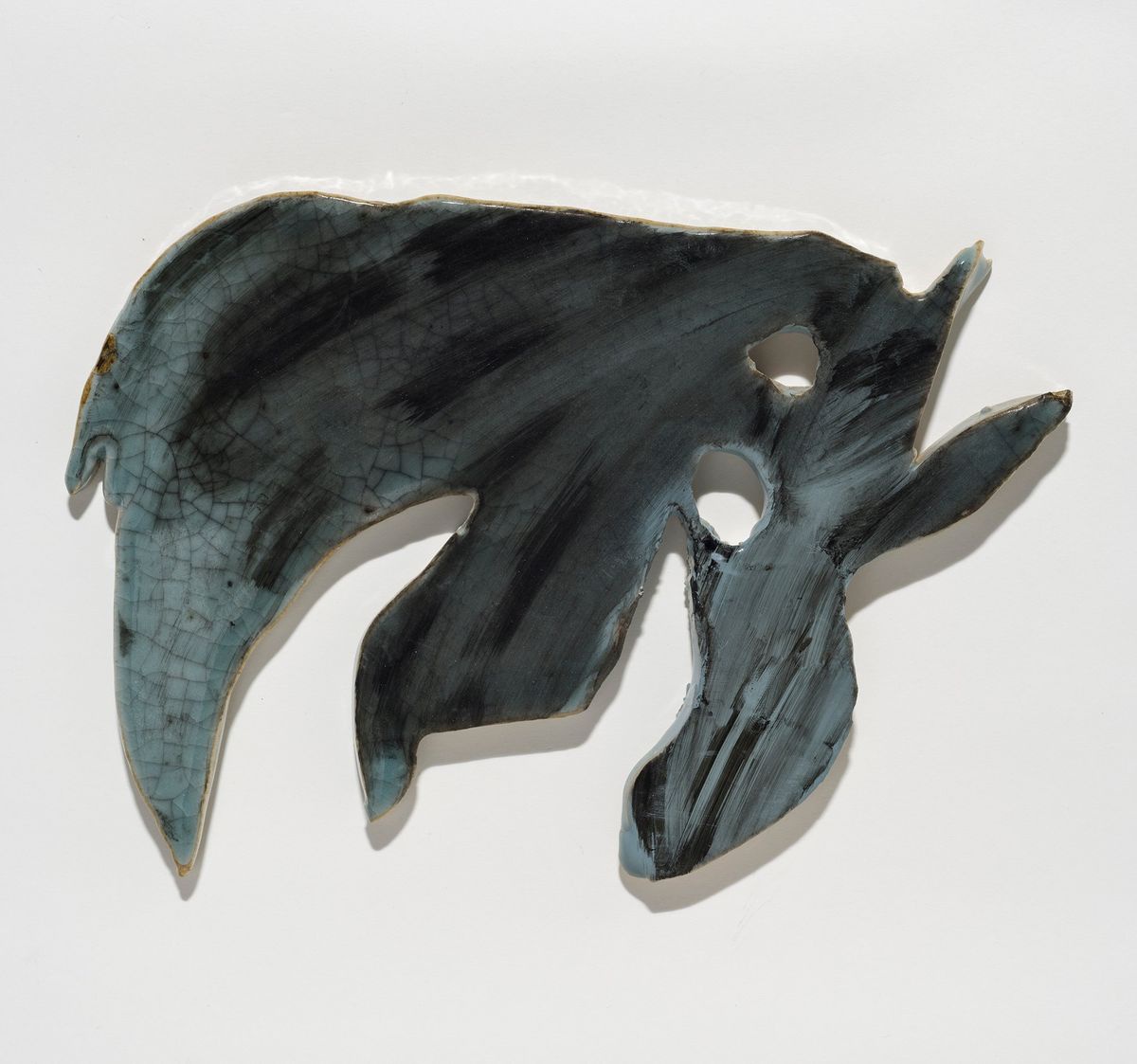
Manuel Mathieu, Untitled (2019). Ceramic. Courtesy the artist.
At Kavi Gupta in Chicago, the artist's solo exhibition Negroland: A Landscape of Desires (24 April–3 July 2021) featured these interrelations, with ceramics, paintings, and sculptures drawn together in a sensuous display in which Mathieu asserts 'the dream that our desires can be perceived as more than transactional.'
